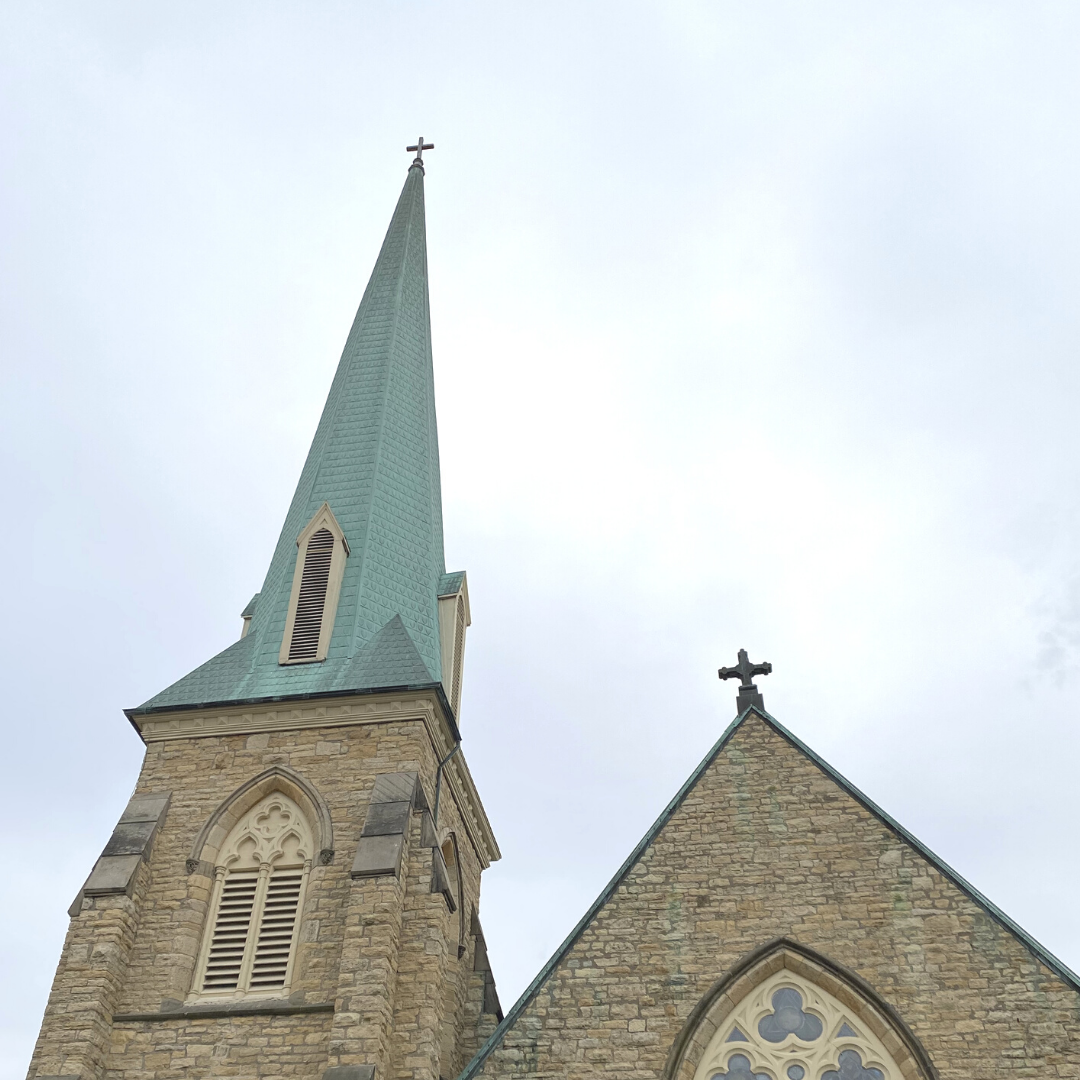Chasing Steeples
THE SACRED INVITATION IN EVERYDAY THINGS
It’s no secret I am drawn to church steeples. My Instagram feed is proof enough. I love the way their design makes my eyes turn upward, each pinnacle turning ordinary comings and goings into holy moments.
But lately my interest borders on obsession.
Earlier this week, my preschoolers and I made our way through downtown. Our city has deep Catholic and Lutheran roots, resulting in stately stone edifices on nearly every block. I felt like I was on an Easter egg hunt, but that’s when things turned a tad crazy: Three times I stopped our Volkswagen minivan in the middle of the street to snap pictures of steeples that caught my eye. I hung out the window with my phone while my four-year-old shouted, “I like that one, mama! It looks like a castle!”
Here are the fruit of our adventures…
Growing up in a Midwestern Baptist church, our building was more practical than ornate. Wooden pews were traded for stackable chairs, and a gymnasium was added, a place where we AWANA kids ran until our heads were sweaty. But not everything was utilitarian.
Once a monastery, the grounds contained vestiges of more liturgical beginnings—small and simple, but intricate little details that made the space seem more mysterious. My favorite feature was the wall of stained glass windows at the back of the sanctuary. You had to sit in the back row to enjoy them properly, and just my luck, that’s where my friends and I hung out during services. We would huddle in the back passing notes on the offering envelopes and snickering about finding the word breasts in the Song of Solomon. Classic church kids.
Yet my eyes were often drawn to the windows. Light would shine through the translucent glass, coloring rows of people in reds, blues, and oranges. Even gray days appeared a bit brighter through the delicate panes. The world on the other side seemed more hallowed somehow.
There is a hush reserved for such sacred spaces, an unspoken invitation into something more, something beautiful. Whereas multipurpose rooms encourage practical application and service, cathedrals urge souls to fall silent, to sit wordless in the Divine glory and reverence that lingers in the air. And while I support low overheads and more money coming out of the church than kept within, I cannot shake the feeling that Christianity has lost something in our push toward pragmatism.
On the day the Notre-Dame de Paris was eaten alive by flames, we all felt it. We watched as its iconic steeple turned to ash, leaving a vacancy in the skyline it had occupied for so long. An edifice that for centuries pointed people upward was lost, and even if we had never been to Paris, an ache settled in our chests. A fabled piece of French Gothic architecture was gone, but it was more than that. Something mysterious, something holy housed here on earth crumbled—and the world mourned.
It was as if the stones of Notre-Dame themselves cried out in their final moments, singing a heavenly song with their last breaths.[1]
I’ve often heard “the church is a Body, not a building,” which is true—and yet, it is not the whole truth. The people of God exist apart from structures, sure. No arguments here. But we do our souls a disservice when we discount structures altogether. When we do not look for God in the natural world or in good things made by human hands, we miss out on Divine invitations in ordinary moments. We overlook steeples that interrupt us in the most holy ways.
While the earth will pass away, what we see is not void of the eternal.[2] Sacred things and places still matter, not because they are replacements for God, but because they point us ever toward him. They give us spiritual eyes to see God’s everyday presence and to engage the world right in front of us—not out of duty, but out of delight.
And so, we keep looking for steeples on the horizon. We pay attention to where sacredness catches us, hoping to hear the unseen whisper of the eternal right here on earth.
Four Ways to Develop Eyes that See
How can we develop eyes that see the world as an invitation into knowing God? The path may look a little different for all of us (we don’t all get sidetracked by steeples). But we can embrace a few habits that help us notice where God is getting our attention and see the tangible world through a spiritual lens.
Keep a record. When something in your everyday life causes you to pause and to think about God, write it down or take a picture. The more you commemorate the moment, the more you train your eyes to be on the lookout for Divine interruptions.
Reflect on and write about how those sacred places affect your view of God. Ask yourself: What is it about this place that stops me? What might God be revealing in this moment? How does what I see align with what God tells me about himself in Scripture? What longings or questions surface in this place? [Note: Reflection or journaling can initially seem intimidating, so don’t expect yourself to write a novel right out of the gate. Aim for three to five sentences (a worthy paragraph) each day, or simply focus on one question.]
Tell someone. Share with a friend, spouse, or family member how a particular place catches your eye. Try to put words to what you experience there. Also, invite the other person to tell about a similar experience.
Create sacred spaces within your home. Visual reminders of our encounters with God can help clue us into God’s continued presence. They help us remember and hold fast, especially when we struggle to believe God is near. We can display a picture of a sacred place or put a post-it note on the refrigerator with a particular verse or saying that points us back to certain moments or truths.
The bottomline, like any habit, the more you get into a rhythm, the more it works its way into your daily life and spiritual practices.
We view our slight, short-lived troubles in the light of eternity. We see our difficulties as the substance that produces for us an eternal, weighty glory far beyond all comparison, because we don’t focus our attention on what is seen but on what is unseen. For what is seen is temporary, but the unseen realm is eternal. —2 Corinthians 4:17-18 (TPT)



